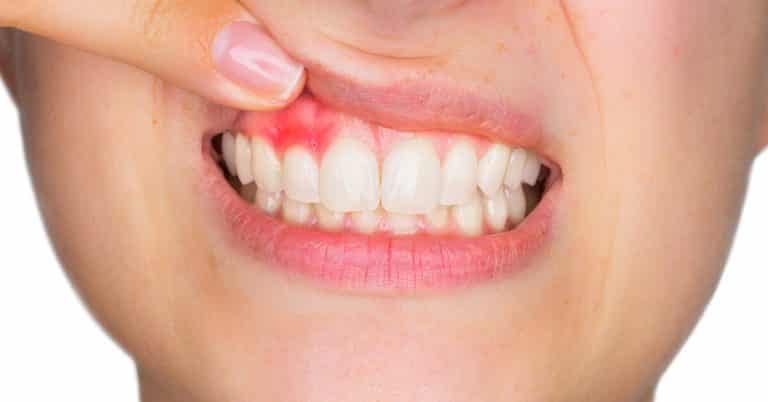How Do I Know If I Have Gum Disease? | Dental Designer, NJ
by Dr. Harmanpreet Kaur | February 15, 2018
What is gum disease?
Gum disease, or gingivitis, is a common condition which affects most of us at some stage of our lives. It is an inflammatory response of the gum tissues to bacterial plaque build-up.
Periodontal disease, or periodontitis, is a condition affecting about a third of the population, with a third of those in turn affected by severe disease. Periodontitis results in loss of the supporting structures of the tooth, including the surrounding bone and periodontal ligament connecting the tooth to the bone.
Signs of gum disease
Swollen and red, bleeding gums are the classic signs of gum disease. Symptoms depend on the severity of the condition, with bleeding being one of the most common. However, this sign can be masked or even absent in smokers as a result of a compromised blood supply, which compounds the issue further.
Additional signs include bad breath or halitosis, gum recession resulting in the formation of dark or black triangles between the teeth, or the classic “getting long in the tooth”. The mobility of the teeth can also occur, which can result in movement or migration of the teeth. The end stage of the condition is tooth loss due to loss of supporting structures around the teeth.
What to look out for in case of gum disease:
- Bleeding Gums
- Swollen Gums
- Redness
- Painful gums
- Loss of gum tone and texture
- Gum recession
- Bad taste
- Halitosis or bad breath
- Tooth loosening
- Difficulty chewing
- Tooth migration
While both acute and chronic forms of gum disease exist, it is the chronic form that predominates. Chronic periodontitis disease goes largely unnoticed as it is a non-painful condition and the above signs and symptoms generally present at the later stages or with advanced disease.
The only way to know if you have gum or periodontal problems is to be examined by your dentist. A simple screening exam can alert us to the presence of any disease, which would then warrant a more detailed mapping of the gum tissues, including X-ray analysis of the supporting bone structures. Groups with a higher risk include smokers, uncontrolled diabetics and those with a genetic predisposition. Stress and poor diet have also been implicated
How to treat gum disease?
Good oral hygiene regimens, including regular and frequent visits to your Dentist, can help to reduce your risk of allowing the periodontal disease to develop and progress, and indeed supportive periodontal regimes are considered to be the mainstay of controlling the condition. The advice for all patients is to continue with regular check-ups at your dentist, every six months. If your dentist feels there is a need for further investigation and management, they may then refer you to a specialist periodontist for a consultation.
Call Dr. Harmanpreet Kaur’s dental office in North Plainfield NJ at 908-756–6623 to set an appointment today! We are the dentist for our community in Green Brook Township, Middlesex, Bound Brook, Piscataway, Dunellen and North Plainfield NJ. We are open on Saturdays and late evenings on weekdays. Check out dentaldesignernj.com for more details and send request online for your dental appointment. Follow us on facebook.com/dentaldesignernj and you get a chance to win gift card for fifty dollars.

Sensitive Teeth Could Be An Alarm Bell For Decay

